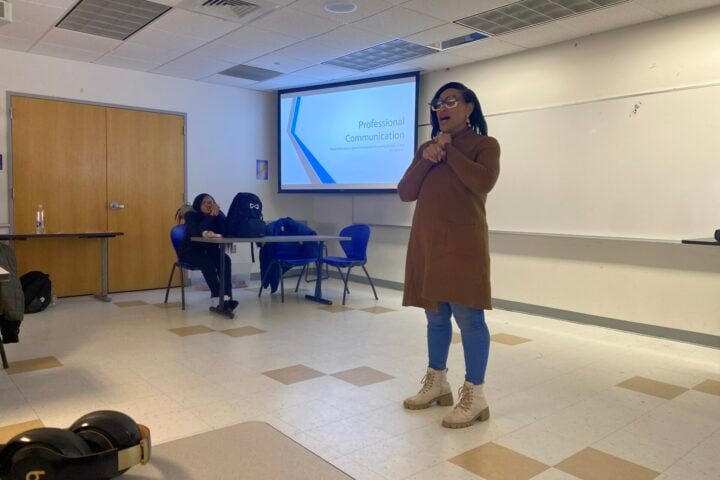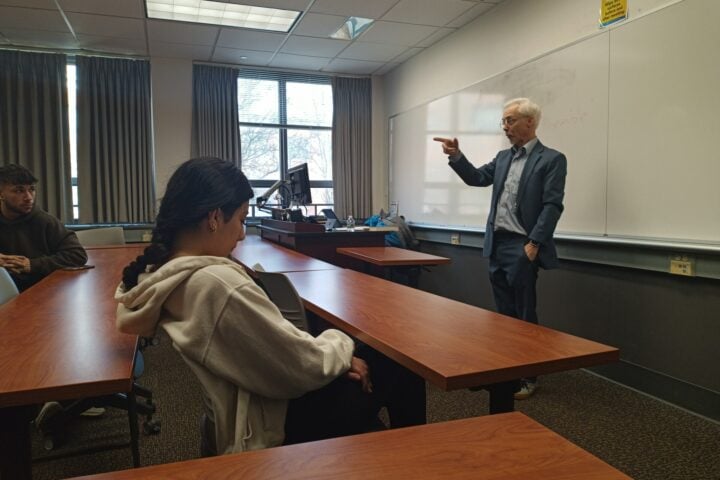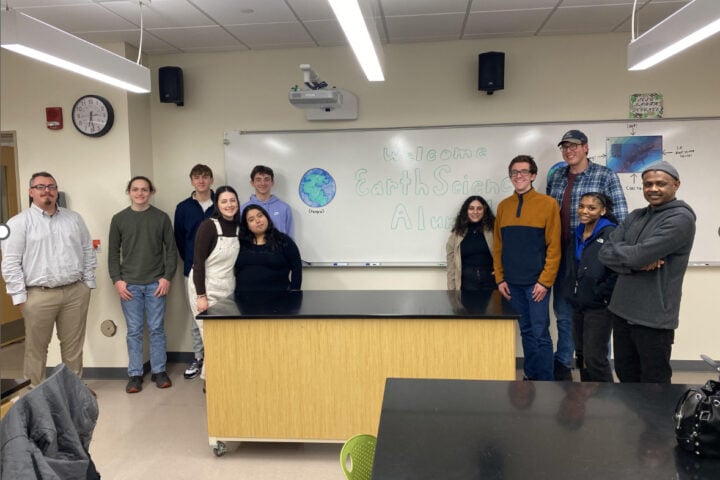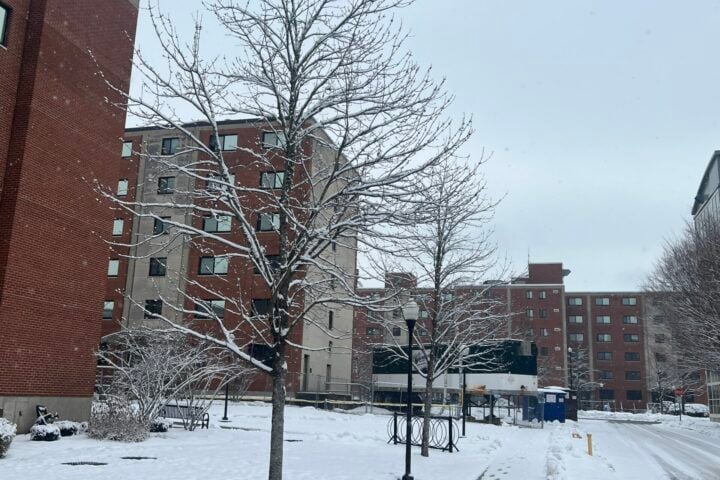Melissa Nunez – General Assignment Reporter
To the north, temperatures are quite cold, while in the south temperatures are a bit warmer, and whether or not Connecticut experiences a warmer or cooler spring season is due to whichever way the wind blows, said James Fullmer, earth science professor.
Fullmer said April is a transitional month between winter and summer and also happens to be a very windy period, so whichever direction the wind is blowing from will also reflect the temperatures our region experiences.
“If we get wind from the north, like we are getting right now, temperatures can be record cold for the date,” said Fullmer. “But then it turns around and we could be up [around] 70 degrees, because we are getting wind from the southwest and it is especially contrasting for this time of year and it is also very contrasting for winter too. You can get much colder in winter, but you can also get very mild, like we have had this winter.”
Fullmer added he disagrees the common media forecasters’ misconception, that this record-setting Connecticut weather is due to an el Niño, which has been proven to have little consequence on Connecticut weather overall.
But Kelly Lombardo, University of Connecticut coastal meteorology professor, disagreed, saying our winter and early spring abnormalities are indeed attributed to an unusually strong el Niño.
“Essentially it is a warming of the ocean temperatures in the equatorial eastern pacific and based on the fact that the ocean warms, we actually get an atmospheric response,” said Lombardo. “Ocean temperatures vary on very long time scales, comparatively to the atmosphere. So the ocean will heat in this particular area and be warm for an extended period of time and eventually will cause the atmosphere to behave in a particular way based on this warming and the pattern that sets up in the atmosphere is fairly stable due to the fact that this ocean temperature anomaly, this warm anomaly is sitting there for an extended period of time.”
James Tait, science education and environmental studies professor, said, from what he does know about weather patterns, he can also attribute Connecticut’s unseasonable winter and early spring to el Niño, but suspects global warming to be playing a larger role as well.
Tait said, while it is difficult to attribute specific storms or unusual weather patterns to global warming, there is essentially more heat in the atmosphere, which strengthens the chance of experiencing stronger storms or unusual weather patterns.
He said an example of this is how a hotter atmosphere is able to evaporate and store much more water, thus following longer periods of drought, and when saturation finally occurs, the amount of water induces a very heavy precipitation.
Lombardo said el Niño is breaking down, so instead of being anomalously warm, it is going to start transitioning into cooler temperatures, which is not uncommon for our state.
“El Nino is weakening the hold on our hemispheric patterns, which means that instead of getting a regime where the northeast is particularly warm, that hold now is relaxing,” said Lombardo. “Now we can actually start to get those pulses a little bit more frequently than we have through the winter, which is where we got our snow [last week].”
Fullmer said, in his opinion, temperature cannot be reliably predicted beyond five days and the uncertainty grows even greater beyond that period, and precipitation is harder to predict beyond three days. He added that unusual weather patterns like we experienced this winter into early spring do occur, and just because they are “unusual does not mean they are impossible.”
























































































[…] Published: April 17, 2016 […]